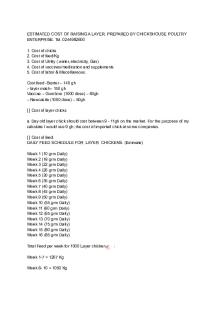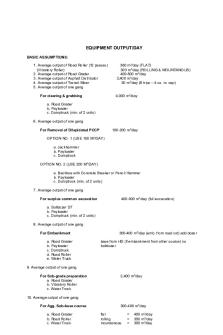The Raygor Readability Estimate PDF

| Title | The Raygor Readability Estimate |
|---|---|
| Author | Thuy Le |
| Course | Culture, Language and DIsabilities |
| Institution | The College of New Jersey |
| Pages | 2 |
| File Size | 118.7 KB |
| File Type | |
| Total Downloads | 66 |
| Total Views | 126 |
Summary
Download The Raygor Readability Estimate PDF
Description
The Raygor Readability Estimate Devised by Alton Raygor (1977), this readability formula is designed specifically for middle/secondary level reading material. More reliable than formulas like the Fry Readability Graph (1977) that include syllable counts, the Raygor count is also easer to determine. Cautions about readability formulas are (1) as they give a grade-level score it is important to remember that grade level is rather ambiguous if we do not also consider a readerʼs prior knowledge, their interests, and background experiences and (2) other factors that should merit consideration include conceptual density, word frequency, and writing clarity. Directions: Step 1 The Raygor is really a lot simpler than it appears at first. The first step is to count out three 100-word passages, from the beginning, middle, and end of a book. The results of the Raygor are averaged out over these three passages. (A quick count can be conducted on one passage, but is not guaranteed to be as accurate). Donʼt count any numerals unless written out as numbers – i.e., do not count “43” but do count “forty-three”. Step 2 Next, count how many sentences you have. If the 100-word limit breaks a sentence in two, count all the words in that sentence, then estimate how many tenths of the sentence are used in your 100-word count. For instance, if you had 15 words in the entire sentence and only seven were part of your 100-word count, you would estimate .5 (15/7 = 2 1/7 = .5). Step 3 Now take the 100-word passage and underline the words with 6 or more letters. Count how many words are in the passage. Step 4 To plot the results on the Raygor, find the total number of sentences in your passage on the vertical axis (left column) of the Raygor scale and place a dot on the margin closest to your number. Next find the number of words having six (6) or more letters on the horizontal axis (bottom scale) and again place a dot closest to that number. Now find the place where the dots intersect on the graph to arrive at your grade level. Remember that the grade level is only valid within the “parallel” lines. If your plot is in the top left area of the grid or the bottom right (outside of the parallel lines) your total is invalid for the purposes of the estimate.
Example: Section:
Sentences
6+ Words
A B C Total
6 6.8 6.4 19.2
15 19 17 51
Average:
6.4
17
!...
Similar Free PDFs

The Raygor Readability Estimate
- 2 Pages

Change in Accounting Estimate
- 7 Pages

9.2 Estimate Activity Resources
- 6 Pages

Layers - Rough estimate of
- 4 Pages

SIMPLIFIED ESTIMATE BY MAX FAJARDO
- 300 Pages

Estimate by max fajardopdf
- 169 Pages

Dpwh cost estimate guidelines
- 20 Pages

Handbook of Construction Estimate
- 76 Pages
Popular Institutions
- Tinajero National High School - Annex
- Politeknik Caltex Riau
- Yokohama City University
- SGT University
- University of Al-Qadisiyah
- Divine Word College of Vigan
- Techniek College Rotterdam
- Universidade de Santiago
- Universiti Teknologi MARA Cawangan Johor Kampus Pasir Gudang
- Poltekkes Kemenkes Yogyakarta
- Baguio City National High School
- Colegio san marcos
- preparatoria uno
- Centro de Bachillerato Tecnológico Industrial y de Servicios No. 107
- Dalian Maritime University
- Quang Trung Secondary School
- Colegio Tecnológico en Informática
- Corporación Regional de Educación Superior
- Grupo CEDVA
- Dar Al Uloom University
- Centro de Estudios Preuniversitarios de la Universidad Nacional de Ingeniería
- 上智大学
- Aakash International School, Nuna Majara
- San Felipe Neri Catholic School
- Kang Chiao International School - New Taipei City
- Misamis Occidental National High School
- Institución Educativa Escuela Normal Juan Ladrilleros
- Kolehiyo ng Pantukan
- Batanes State College
- Instituto Continental
- Sekolah Menengah Kejuruan Kesehatan Kaltara (Tarakan)
- Colegio de La Inmaculada Concepcion - Cebu







